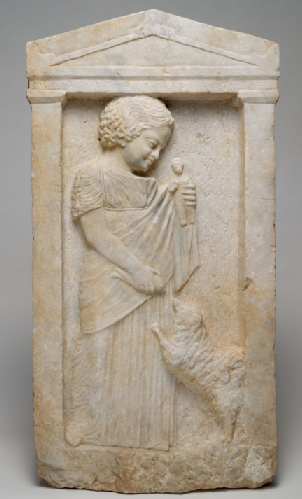Democracy educators in the US have much to learn from the international
Escuela Nueva or "New School" movement born in Columbia in the 1970s. This includes the simple -- but hugely disputed --lesson that it is possible to make large scale democratic change from inside the system, working outward to build coalitions.
My conviction grows from research I've done as part of my ongoing Bridging Differences discussion with Deborah Meier on
Education Week. In her
last blog, "Schools Are Democracy Sites, Not Chain Stores," Meier calls for discussion about what should be a publicly funded school "with democracy in mind."
"A society like ours with vast inequalities of power has trouble even imagining what a full democracy might entail," she writes. "I'm hoping for a conversation that might lead to greater agreement about what kind of democratic processes entitle a school to public funding. Name me a few you'd insist on, Harry (and friends). What's your short list of what shouldn't be allowed or what must be practiced in schools that rest on public resources--in the name of democracy?"
I
responded today, December 22, with lessons I see from the
Escuela Nueva movement. Meier's question raises related questions. "What is democracy?" Also, "How does the idea of democracy reawaken as an inspiring idea, far more than a trip to the ballot box?" Finally, "How can we achieve democratic change in education on a large scale?"
These are global questions since democracy is threatened around the world and education in many societies, including in the US, is mostly a hypercompetitive race for individual success.
Many are fatalistic, thinking real change just can't happen. I also see a problem in the anti-institutionalism and outside critic stance widespread among academics and intellectuals. Proponents of radical democracy in education from the late Paulo Freire to Henry Giroux and many others today think education is determined by capitalism and we won't get democracy in schools without society-wide revolutionary changes.
That's why the emerging movement for democracy schools called Escuela Nueva, or New School, is so important. It counters fatalism and also the anti-institutional mindset.
We need more details about this but the basic story is that the New School movement was launched in the 1970s by Vicky Colbert working with Beryl Levinger and Oscar Mogollon. Colbert studied at Javeriana University in Bogota and got a fellowship for graduate studies at Stanford. "I was exposed to wonderful theories," Colbert told Sara Hamdan for a
New York Times article in 2013, "
Children Thrive in Rural Columbia's Flexible Schools." (I'm sure John Dewey was on the list). "When I came back I wanted to work with the poorest of the poor schools, the isolated schools."
She became coordinator of rural schools for the Columbian Department of Education in the 1970s and with Levinger and Mogollon developed the New School model, finding support in rural communities. With growing evidence of its success, it became the main approach for rural education in the country and spread to a number of urban schools.
The New School model is based on democratic decision-making, active learning, and productive community work. Teachers, parents, and students have strong voice. David Kirp reported in another
New York Times piece, "
Make School a Democracy," last spring on his visit to a school in a low income neighborhood in the town of Armenia, Columbia. The student council was running a radio station, planning what to do with underutilized school spaces, and organizing a day set aside to promote peace.
Hamdan quotes Myriam Mazzo, a teacher in a single room school in Armenia, who says "the student is not afraid to speak or share ideas. He is participative, democratic, knows how to share and work in teams. Most important he can work at his own pace."
Students map their communities and bring their lessons to community members. Teachers use many local resources. Parents are active in the everyday activities of the schools. Their involvement, researchers find, impacts their parenting and their level of community involvement. There are core elements to the New School, such as the idea that teachers are more "guides" than instructors, but the approach adapts to the particulars of local communities and societies.
UNESCO reports the adoption of the approach in 20,000 schools in Columbia. According to the World Bank, students in the New Schools in Columbia outperform better-off students in traditional schools. A UNESCO study found that Columbia, where most rural schools use the model, does the best job of any Latin democracy in educating rural children. The Columbia Department of Education, the Clinton Global Initiative, UNESCO, and many other groups support the approach.
The movement has spread to 40 countries including Brazil, Chile, Nicaragua, Mexico, Uganda, Zambia, and Vietnam. Though New Schools have many resemblances to Scandinavian folk schools, to Jane Addams Hull House, to Dewey's "Schools as Social Centers," and to Central Park East schools in New York and Mission Hill Schools in Boston, the New School approach is largely unknown here. An exception is Kirp, a professor at UC-Berkeley.
From my perspective, the New School model shows that good organizing can produce large scale democratic change from the inside of systems, not simply from the outside. Colbert and her team built coalitions with government as a partner from the outset. The success of this approach challenges a great deal of conventional wisdom, both on the left and in community organizing.
The
website for the organizing heart of the movement, Fundacion Escuela Nueva, has a wealth of resources and information. A web search turns up many more.
We need to begin learning. And debating the implications.


 This is Melisto, a daughter of Ktesikrates from
This is Melisto, a daughter of Ktesikrates from 
